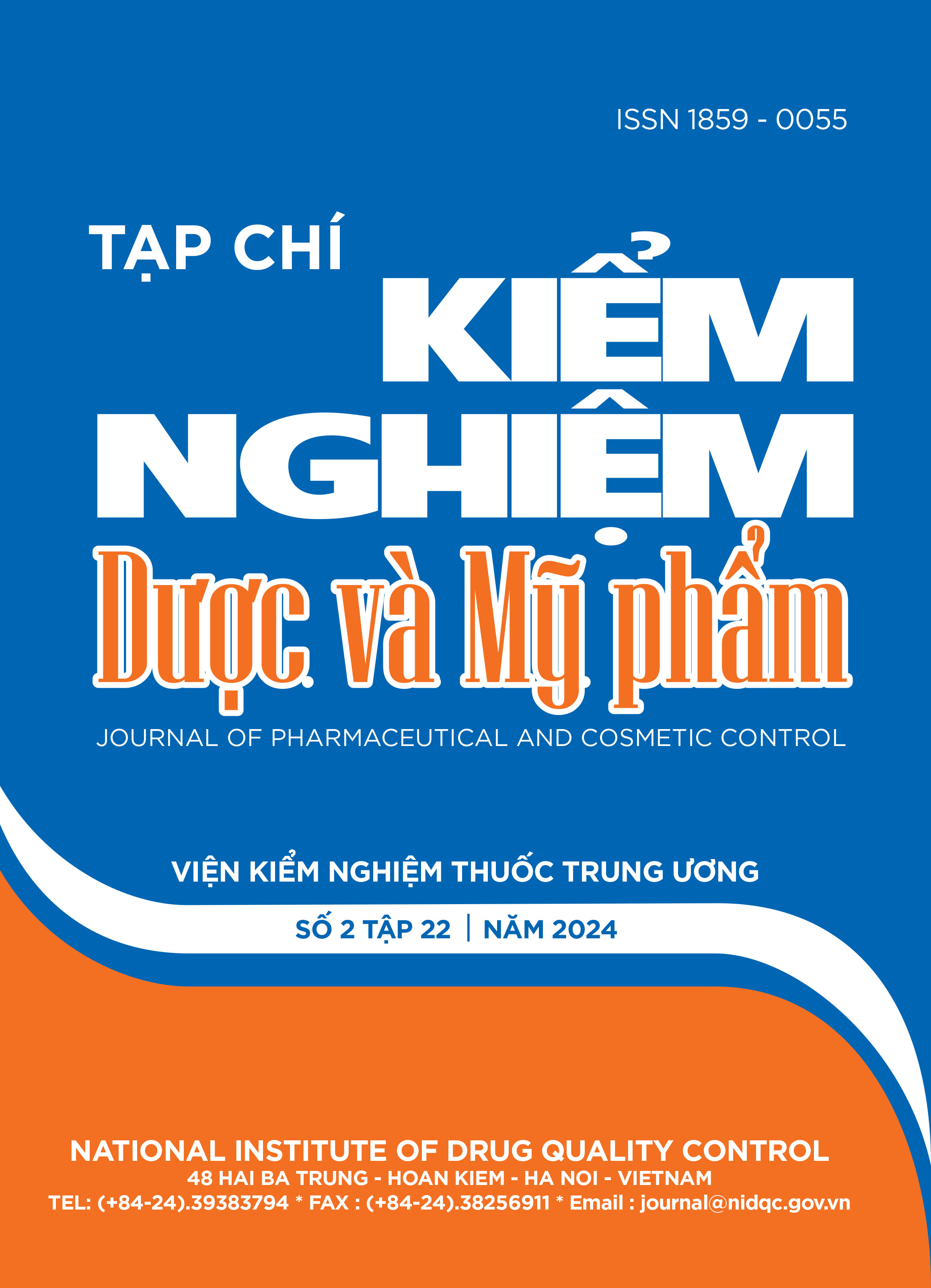Research and application of UPLC-MS/MS method for analyzing residues of chemotherapy drug ifosfamide in wastewater samples surrounding hospitals with oncology departments performing cancer chemotherapy
Main Article Content
Abstract
Ifosfamide, a cancer chemotherapy drug frequently detected in numerous studies worldwide, poses potential harm to organisms and humans. However, in Vietnam, research in this area remains limited. In this study, the UPLC-MS/MS analytical method, combined with SPE extraction, was developed and validated following AOAC and EC 808/2021 guidelines to detect ifosfamide residues in the water environment and evaluate its occurrence in river water samples near hospitals with oncology departments conducting cancer chemotherapy in Can Tho City, Vietnam. The analytical procedure demonstrated high sensitivity, with a limit of quantification of 1 ng/L, accuracy ranging from 85.1 % to 106.9 %, and precision ranging from 4.7 % to 16.4 %. Analysis of 20 river water samples collected from areas near five hospitals with oncology departments in Can Tho City revealed the presence of ifosfamide in 55 % of the samples, with concentrations ranging from 1.0 to 3.8 ng/L. This is the first publication documenting the presence of ifosfamide in river water in Vietnam. The study highlights the presence of cancer chemotherapy drug pollution in the water environment, laying the groundwork for future research on the toxicity of such pollutants and strategies for mitigating exposure to cancer chemicals in Vietnam.
Article Details
Keywords
chemotherapy drugs, ifosfamide, LC-MS/MS, river water
References
2. Nassour C., et al. (2020), Occurrence of anticancer drugs in the aquatic environment: a systematic review, Environ Sci Pollut Res Int, 27(2), pp. 1339-1347.
3. Vaudreuil M.A., et al. (2020), A framework for the analysis of polar anticancer drugs in wastewater: On-line extraction coupled to HILIC or reverse phase LC-MS/MS. Talanta, 220, pp. 121407.
4. Ferrando-Climent L., Rodriguez-Mozaz S., and Barcelo D. (2013), Development of a UPLC-MS/MS method for the determination of ten anticancer drugs in hospital and urban
wastewaters, and its application for the screening of human metabolites assisted by information-dependent acquisition tool (IDA) in sewage samples, Anal Bioanal Chem, 405(18), pp. 5937-5952.
5. Garcia-Ac A., et al., (2009), On-line solid-phase extraction of large-volume injections coupled to liquid chromatographytandem mass spectrometry for the quantitation and
confirmation of 14 selected trace organic contaminants in drinking and surface water, J Chromatogr A, 1216(48), pp. 8518-27.
6. Idder S., et al. (2013), Quantitative on-line preconcentrationliquid chromatography coupled with tandem mass spectrometry method for the determination of pharmaceutical compounds in water, Anal Chim Acta, 805, pp. 107-115.
7. Azuma T., et al. (2015), Occurrence and fate of selected anticancer, antimicrobial, and psychotropic pharmaceuticals in an urban river in a subcatchment of the Yodo River basin, Japan, Environ Sci Pollut Res Int, 22(23), pp. 18676-18686.
8. Petrie B., et al. (2016), Multi-residue analysis of 90 emerging contaminants in liquid and solid environmental matrices by ultra-high-performance liquid chromatography tandem mass spectrometry, J Chromatogr A, 1431, pp. 64-78.
9. Martin, J., et al. (2011), Simultaneous determination of a selected group of cytostatic drugs in water using highperformance liquid chromatography-triple-quadrupole mass spectrometry, J Sep Sci, 34(22), pp. 3166-3177.


